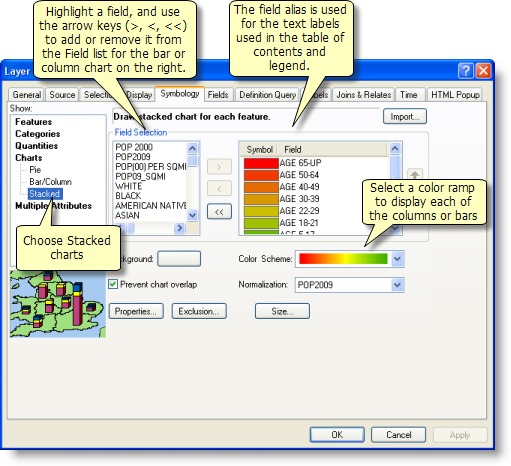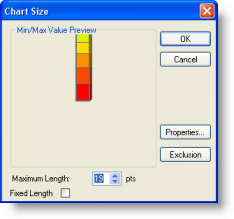Stacked charts are used to display amounts by category, for example, to view population broken down by age categories. Each feature is annotated with a chart that shows the amounts in each category, such as in the example shown here.
- Right-click the layer you want to draw showing quantitative values with stacked charts and click Properties.
- Click the Symbology tab on the Layer Properties dialog box.
- Click Charts and click Stacked.
- Under Field Selection, click the numeric field(s) that you want to map. Then, use the arrow buttons to add and remove fields to the field list.
- Optionally, select a Normalization field to normalize the data. The values in this field will be used to divide the value fields to create ratios.
- Use the Color Scheme drop-down list to select the color ramp that you want to use.
- If you want to prevent overlapping charts, check Prevent chart overlap.
- Optionally, you can click the Exclusion button and use a SQL expression to exclude values (such as outliers).
- Click Size.
- Click OK.
The stacked chart panel will appear, in which you set the display properties, such as field names, color ramps, and so on, to generate the stacked charts for each feature in your layer. 

You can double-click an individual symbol in the list to change its properties.
This will display the Chart Size dialog box to set the maximum length of the bars in your chart using points. 

Note that when you set this value, it will also scale the current chart's width. Click Properties to open the Chart Symbol Editor dialog box and set these values. 
You can use the Chart Symbol Editor to set the stacked chart dimensions, the orientation (bar or column), and other display properties.
